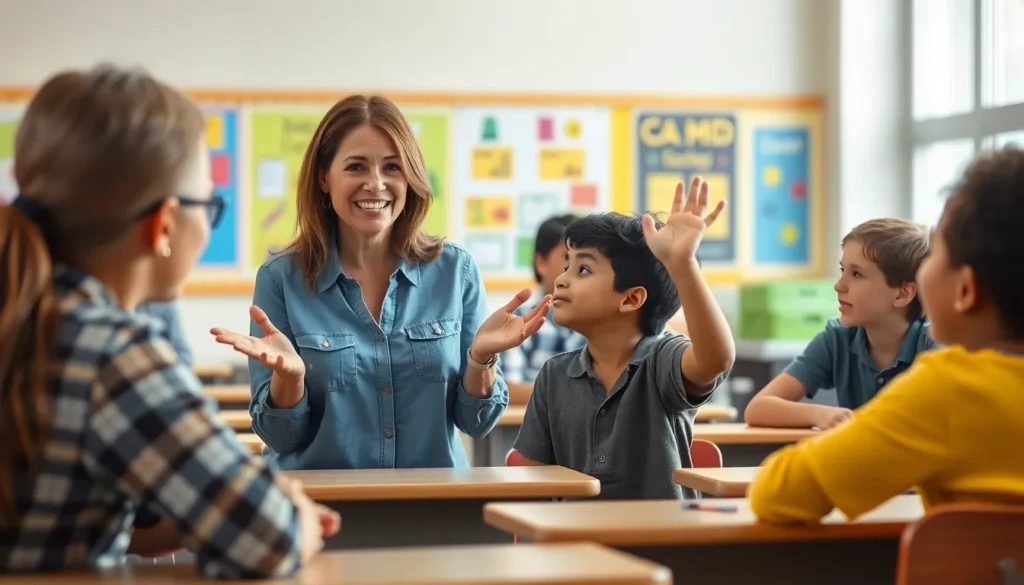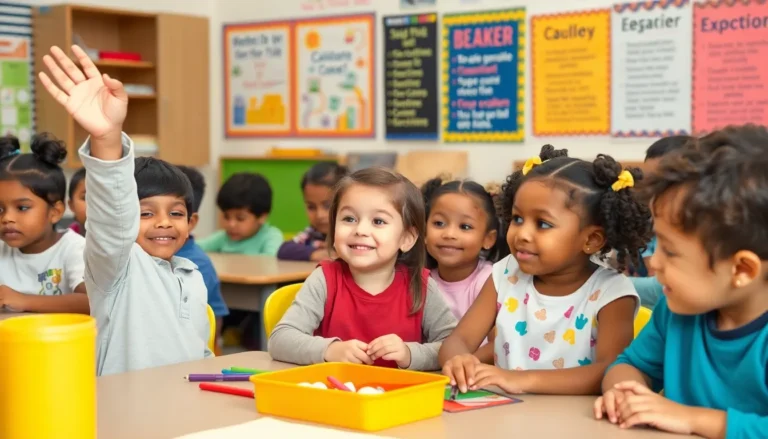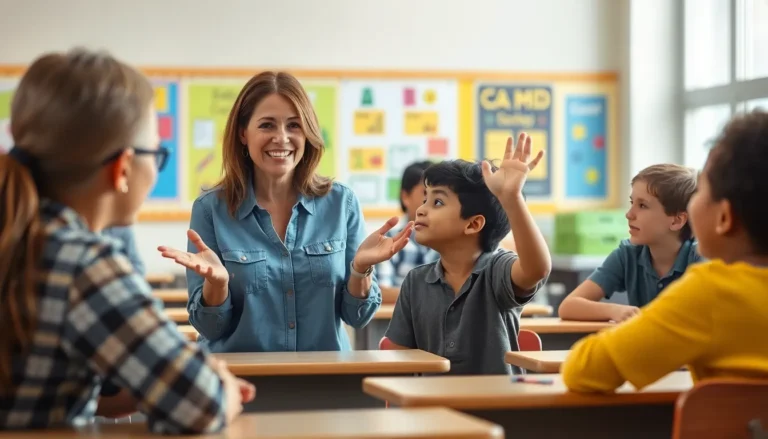Table of Contents
ToggleIn a world where everyone seems to have their own idea of acceptable behavior, establishing clear behavior expectations is like setting the GPS for a smooth journey. Whether in the workplace, at school, or even during family gatherings, knowing what’s expected can save everyone from awkward encounters and misunderstandings. Imagine a meeting where everyone actually listens instead of scrolling through their phones—sounds like a dream, right?
Behavior expectations aren’t just rules; they’re the secret sauce for creating a positive environment. They help individuals understand how to interact respectfully and effectively, making life a whole lot easier. So, let’s dive into the importance of these expectations and discover how they can transform chaos into harmony, one laugh at a time. After all, who wouldn’t want to navigate their social landscape without stepping on any toes?
Understanding Behavior Expectations
Behavior expectations clarify acceptable actions within specific contexts. These guidelines foster respectful interactions and contribute to a more positive environment.
Definition of Behavior Expectations
Behavior expectations refer to the standards of conduct that individuals are expected to follow. These standards can vary by setting, outlining appropriate interactions and responses. Establishing these expectations involves defining clear rules and behaviors that promote cooperation and understanding. For instance, workplaces may emphasize punctuality and teamwork, while schools might focus on respect and attentiveness. Clear behavior expectations help individuals comprehend their roles and responsibilities within the group.
Importance in Various Contexts
Behavior expectations play a crucial role in various settings. In workplaces, they enhance productivity and morale by providing employees with a framework for interaction. Educational environments benefit from established expectations, leading to improved academic performance and a sense of safety among students. Families, too, thrive with clear expectations, creating strong bonds and reducing conflicts. Understanding the significance of behavior expectations enables individuals to navigate social situations confidently and respectfully, leading to smoother interactions.
Setting Clear Behavior Expectations

Establishing clear behavior expectations is essential for promoting respectful interactions across different settings. These guidelines help create a more positive environment where communication thrives.
Strategies for Implementation
Implementing behavior expectations requires clarity and consistency. Clearly define expected behaviors, ensuring everyone understands them. Providing examples illustrates acceptable actions and helps contextualize expectations. Communicate these guidelines through regular training sessions or workshops, keeping them fresh in participants’ minds. Regular reinforcement of these standards through reminders or discussions supports long-term adherence. Adjusting expectations as necessary ensures they remain relevant and effective over time.
Involving Community Stakeholders
Community stakeholders play a vital role in setting behavior expectations. Engaging teachers, parents, and local leaders alongside staff creates a comprehensive approach. Collaborative efforts can lead to shared ownership of behavior standards, increasing commitment among all parties. Conducting surveys or focus groups gathers input, ensuring expectations reflect community values. Regular meetings foster ongoing dialogue, allowing stakeholders to discuss challenges and successes. This involvement creates a cohesive environment where everyone actively participates in promoting and upholding respectful interactions.
Examples of Behavior Expectations
Behavior expectations manifest differently across various environments. Understanding these specific examples enhances clarity and adherence.
Behavior Expectations in Schools
In educational settings, behavior expectations promote respect and safety. Students must raise hands before speaking. They should walk quietly in hallways. Furthermore, showing kindness to classmates remains vital for a positive atmosphere. Teachers establish expectations through clear classroom rules. These rules often include listening attentively and following directions promptly. Moreover, recognizing positive behavior can reinforce standards effectively.
Behavior Expectations in Workplaces
Workplaces thrive when individuals adhere to clear behavior expectations. Employees need to communicate openly with colleagues. They ought to respect diverse opinions during discussions. Additionally, punctuality in arriving at meetings demonstrates professionalism. Transparency in sharing information supports a collaborative culture. Appreciation for teamwork fosters stronger relationships among staff. Regular training workshops help reinforce these expectations throughout the organization.
Assessing Behavior Expectations
Assessing behavior expectations requires effective tools and continuous feedback. Regular evaluation ensures the standards remain relevant and impactful.
Tools for Measurement
Behavior assessments often utilize surveys to gauge understanding and adherence. Conducting observations in real-time settings offers insight into actual behaviors. Data collection can include incident reports, allowing for quantifiable tracking of behavior incidents over time. Feedback from students, employees, or families proves valuable, highlighting areas needing improvement. Analysis of this data supports the identification of trends, ensuring modification of expectations aligns with observed practices.
Adapting Expectations Based on Feedback
Adapting behavior expectations necessitates an open channel for feedback. Regular check-ins with stakeholders foster a culture of dialogue and trust. Surveys and discussions reveal how well expectations are understood and followed. After gathering insights, it’s essential to modify guidelines to reflect community needs. Adjustments can ensure that standards remain relevant and foster positive interactions. Informed modifications enhance engagement and commitment to shared expectations.
Establishing clear behavior expectations is vital for creating positive environments across various settings. These guidelines not only enhance interactions but also promote respect and cooperation among individuals. By implementing and regularly assessing these expectations, organizations and communities can adapt to changing needs and foster a culture of trust and engagement.
The benefits of well-defined behavior standards extend beyond mere compliance. They contribute to a sense of belonging and safety, allowing individuals to thrive in their respective environments. Ultimately, embracing behavior expectations leads to smoother interactions and more harmonious relationships, paving the way for a more respectful and productive society.





